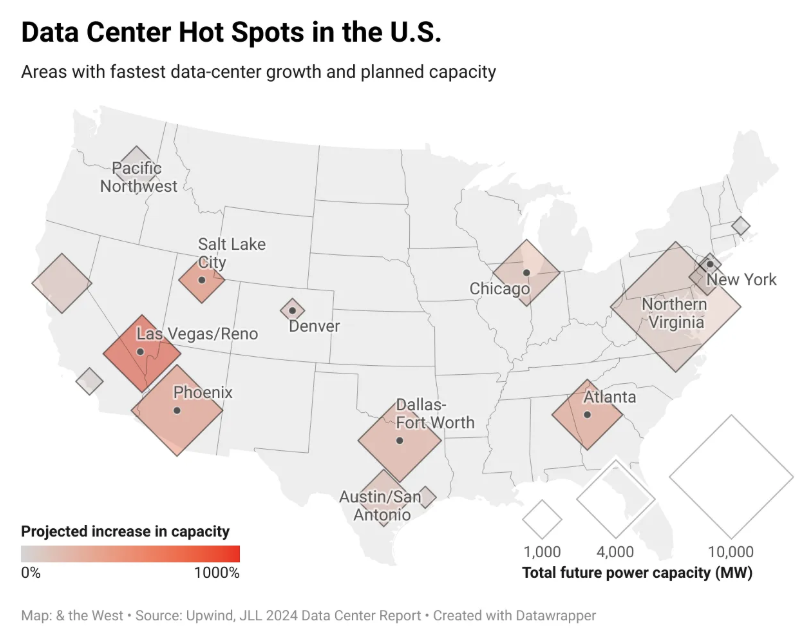Electricity Prices Rise Across The US As AI Data Centers Require More Power
Electricity prices are rising across the country amid the explosion of data centers to accommodate artificial intelligence, according the latest available data from the U.S. Energy Information Administration.
The nationwide average residential price for 1 kilowatt-hour of electricity rose by 6.5% from May 2024 to May 2025.
Maine topped the chart with a 36% increase, while Connecticut and Utah saw increases of over 15%. Click the Axios map above to see where your state falls.
📍 The reason for the price increase varies by region — for example, Maine’s spike is also tied to natural disasters and aging infrastructure. But, analysts say the AI boom is playing a major role.
EACH SEARCH = MORE ENERGY
Data centers, which train and run AI, demand a massive amount of power — more than the current grid can support. U.S. power grid operators are investing billions of dollars in new transmitters and other technology to accommodate the needs, and passing those costs along to consumers.
One estimate found that building up infrastructure to accommodate AI data centers meant that $9.3 billion in costs were recently passed along to customers, according to Axios reporting.
A new IEEFA analysis noted that a major spike in prices set at auction by PJM — an electric grid operator covering many Mid-Atlantic and Midwest states — is largely tied to data centers.
Zoom in: One place where this is playing out is Loudoun County, Virginia, just outside D.C. It’s home to over 200 data centers and handles two-thirds of global internet traffic. It’s the world's largest market for AI-supported data centers.
While it means big bucks for the county’s budget, some residents are less than thrilled. “We’re giving all this energy to data centers, we’re giving all this water to data centers, and it doesn’t seem like we’re getting much back,” Tim Cywinski, communications director at the Sierra Club’s Virginia Chapter, told Bloomberg.
It’s not just power: AI also consumes massive volumes of water to cool servers, raising concerns in water-scarce regions — where about two-thirds of new data centers since 2022 have been built. Heat reduces data operations’ efficiency and can even make them inoperable.
Demands on the energy grid and water supply are not expected to slow down, either. And it’s not just the U.S.; countries around the world are grappling with similar strains.



